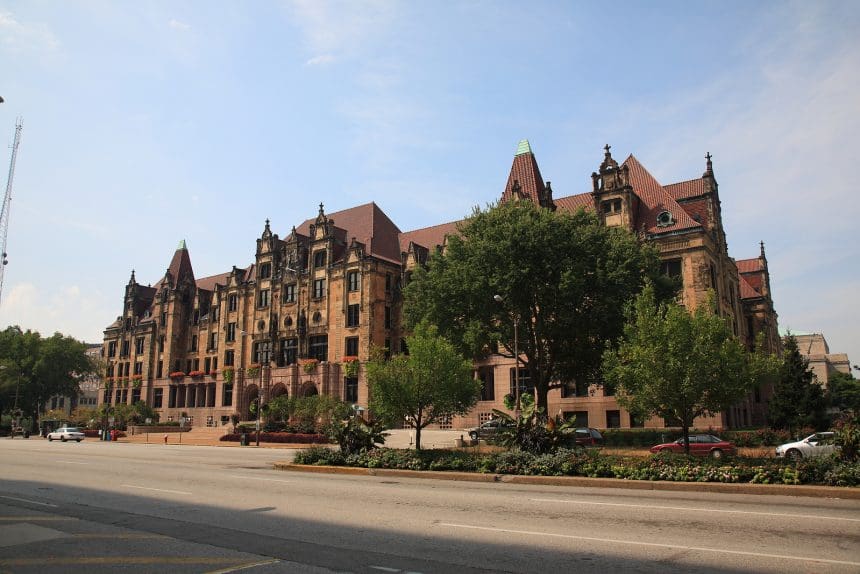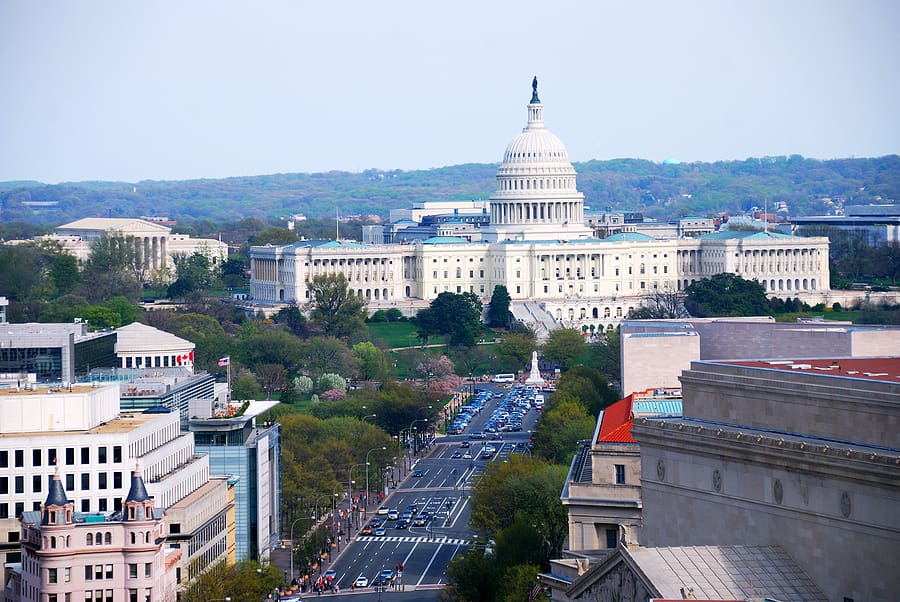
Crime Rates in Major U.S. Cities: St. Louis Among the Nation’s Highest While National Trends Improve
ST. LOUIS, MO (STL.News) — Crime remains one of the most debated issues in American politics, and fresh data from 2024 and mid-2025 provide a complex picture. Nationally, violent crime and homicides are on the decline. Still, several cities—including St. Louis, Detroit, Philadelphia, and Jackson, Mississippi—continue to struggle with elevated homicide rates compared to the rest of the country. Meanwhile, safer metropolitan areas like New York, Los Angeles, and San Francisco are recording their lowest violent crime levels in decades.
This article offers a detailed examination of how crime rates compare across major U.S. cities, St. Louis’s place within the national context, and the potential broader political implications.
National Crime Trends: A Decline in Violence
The FBI’s 2024 crime statistics showed promising progress. Violent crime nationwide fell by 4.5%, and the U.S. recorded a 14.9% decline in murders compared to 2023. Robbery fell nearly 9%, aggravated assault dropped 3%, and rape was down more than 5%.
The Council on Criminal Justice, which monitors crime trends across dozens of cities, confirmed that the downward trajectory has continued into 2025. In the first half of 2025, homicide fell an additional 17% on average across 30 U.S. cities compared with the same period in 2024. That decline represents an estimated 327 fewer lives lost in just six months.
Experts note that the improvements mark the third consecutive year of nationwide declines after pandemic-era spikes in 2020 and 2021. Projections now suggest that 2025 could record a 20% national decline in homicides, which would be the steepest annual drop in decades.
St. Louis: Still Among the Most Dangerous Cities
While national numbers are moving in a positive direction, St. Louis remains one of the cities with the highest homicide rates in the nation.
In 2024, St. Louis posted a homicide rate of approximately 54.4 per 100,000 residents. For comparison, the national average hovers closer to 6 per 100,000. This makes St. Louis nearly nine times more dangerous than the country overall when measuring homicide alone.
Although the city has implemented community policing programs, neighborhood engagement initiatives, and partnerships between police and social organizations, progress has been slow. Community leaders continue to raise concerns about repeat violent offenders, strained police staffing levels, and underlying issues of poverty and gun accessibility.
Other High-Crime Cities: Detroit, Philadelphia, Jackson, and Memphis
St. Louis is not alone in facing these challenges. Other cities remain stubbornly above the national average.
- Detroit, Michigan, recorded a homicide rate of 32.1 per 100,000 in 2024. While that number marks an 18% decrease from 2023, it still keeps Detroit near the top of the list of most violent U.S. cities.
- Philadelphia, Pennsylvania, reported more than 500 homicides in 2021 but has since seen a steady decline. Its 2024 homicide rate is estimated at 22 to 26 per 100,000—still above the national average but moving in the right direction.
- Jackson, Mississippi, remains the most alarming case. Its 2024 homicide rate was recorded at 77.2 per 100,000, the highest in the nation. That makes Jackson more dangerous per capita than any major U.S. city.
- Memphis, Tennessee, consistently reports some of the nation’s highest violent crime rates overall, including aggravated assaults and robberies, in addition to homicides.
These cities share common traits: economic distress, concentrated poverty, high firearm availability, and longstanding struggles with public trust in law enforcement.
Safer Major Cities: A Sharp Contrast
On the other side of the spectrum, some of America’s largest cities are experiencing historic lows in violent crime.
- New York City recorded a homicide rate of only 4.3 per 100,000 in 2024, well below the national average. Despite its massive population, New York is statistically safer today than many mid-sized cities in the Midwest and South.
- San Francisco saw just 35 homicides in 2024, translating to a rate of about 4 per 100,000 residents. That is the lowest total for the city since 1961.
- Los Angeles reduced its homicide rate to 6.1 per 100,000, marking its steepest decline in decades. Officials project 2025 could finish with the lowest homicide total in nearly 60 years.
- Seattle reported a homicide rate of 6.8 per 100,000 in 2024, among the lowest in major U.S. cities.
These numbers highlight the paradox of crime in America: the nation’s largest cities, which are often criticized in political debates, are in many cases safer than smaller urban centers in the Midwest and South.
Washington, D.C., and Chicago: Middle of the Pack
Both Washington, D.C., and Chicago, Illinois, occupy the middle tier of crime rankings.
- Washington, D.C., reported a homicide rate of about 25.5 per 100,000 in 2024, ranking 11th highest in the country. Although high, it is significantly lower than St. Louis or Jackson.
- Chicago, long a favorite target in political rhetoric, recorded a homicide rate of 21.1 per 100,000 in 2024. That represents a significant improvement from peaks earlier in the decade.
Both cities remain challenged by gun violence, gang activity, and socioeconomic divides, but their overall trajectory has been downward.
Political Narratives and Crime Data
Crime statistics are frequently used as political weapons. Republicans often highlight violent crime in Democratic-led cities like St. Louis, Chicago, and Philadelphia, framing them as examples of failed progressive policies. Democrats, in turn, emphasize that red states as a whole record higher per capita murder rates when compared to blue states, citing CDC death-certificate data.
This divide in interpretation demonstrates a critical point: the raw data itself is not politically biased, but the framing and selective emphasis often is. For instance:
- A list of the most dangerous cities by homicide usually features cities with Democratic mayors—but often located in Republican-led states.
- Statewide data show murder rates in red states like Mississippi, Louisiana, and Missouri far above the national average, even though major cities may dominate headlines.
The reality is more nuanced: crime is shaped by economic inequality, demographics, policing strategies, and community resilience—not just party politics.
Underlying Causes Driving Crime Rates
Experts point to several root causes that explain the wide disparities among cities:
- Economic inequality — Cities with high poverty rates and limited job opportunities tend to experience higher violent crime.
- Gun prevalence — Firearm availability remains a significant factor. Cities and states with high gun ownership rates often see higher homicide levels.
- Policing and trust — Community trust in police varies dramatically, affecting both crime reporting and cooperation in investigations.
- Population density and demographics — Younger populations correlate with higher crime rates, while aging populations tend to lower them.
- Social investment — Cities that invest in education, housing, and prevention programs often achieve long-term reductions in crime.
St. Louis in Context: The Road Ahead
For St. Louis, the challenge is steep. The city consistently ranks among the top three U.S. cities for homicide rates, and its rate of 54.4 per 100,000 residents is among the highest in the developed world.
Still, progress is possible. Other cities once plagued by high crime, like New York and Los Angeles, have successfully reduced homicide by investing in police accountability, community partnerships, technology-driven crime analysis, and prevention programs.
St. Louis leaders are closely watching these examples. Efforts to expand youth engagement, improve police staffing, and crack down on illegal firearms are part of the city’s current strategy.
Conclusion: A Nation Divided by Numbers
The national story on crime is improving: homicides are down, violent crime is receding, and many large cities are safer than they have been in decades. But that progress is uneven. Cities like St. Louis, Detroit, Jackson, and Memphis continue to post homicide rates dramatically above the national average.
As the 2024 and 2025 data indicate, America is not experiencing a single crime trend, but rather several. In some cities, the fight against violent crime is being won decisively. In others, progress is halting and fragile.
For St. Louis, the challenge remains immediate and urgent. The numbers demand continued investment, collaboration, and innovation—because behind every statistic is a life, a family, and a community striving for safety.
References
- Federal Bureau of Investigation (FBI). 2024 Reported Crimes in the Nation Statistics. fbi.gov
- Council on Criminal Justice. Crime Trends in U.S. Cities Mid-Year 2025 Update. counciloncj.org
- Washington Post. The good news about murder: homicides have fallen three years in a row. July 31, 2025. washingtonpost.com
- Rochester Institute of Technology (RIT). U.S. City Homicide Statistics Working Paper, 2025. rit.edu
- Wikipedia. Crime in St. Louis. en.wikipedia.org
- Wikipedia. Crime in Chicago. en.wikipedia.org
- Wikipedia. Crime in New York City. en.wikipedia.org
- Wikipedia. Crime in San Francisco. en.wikipedia.org
- Wikipedia. Crime in Detroit. en.wikipedia.org
- Wikipedia. Jackson, Mississippi. en.wikipedia.org
- Axios Seattle. Seattle’s homicide rate ranks among the lowest in U.S. cities. August 21, 2025. axios.com
- Houston Chronicle. California Gov. Gavin Newsom compares Texas and California murder rates. August 2025. houstonchronicle.com











